Azerbaijani cuisine has much to offer and has been influenced over time by the regional cuisines of Iran, Turkey and Georgia. These various influences have been combined with old traditions and thus further developed. Especially popular in Azerbaijan are dishes made of lamb, mutton, poultry or beef. However, due to its location on the Caspian Sea, many dishes are also characterized by the use of various fishes. In addition, Azerbaijani cuisine is full of vegetables, most of which are also grown in the country, such as eggplants, peppers, tomatoes or beetroot. When eating Azerbaijani dishes at a city trip to Baku or abroad, you should also be prepared for the food to be properly spiced! Saffron, cumin, anise, bay leaf, coriander or mint are essential components of various dishes.
These are the top 10 dishes of Azerbaijani cuisine
But enough of the preface, you’re probably already hungry! Let’s start with our list of the most delicious Azerbaijani dishes.
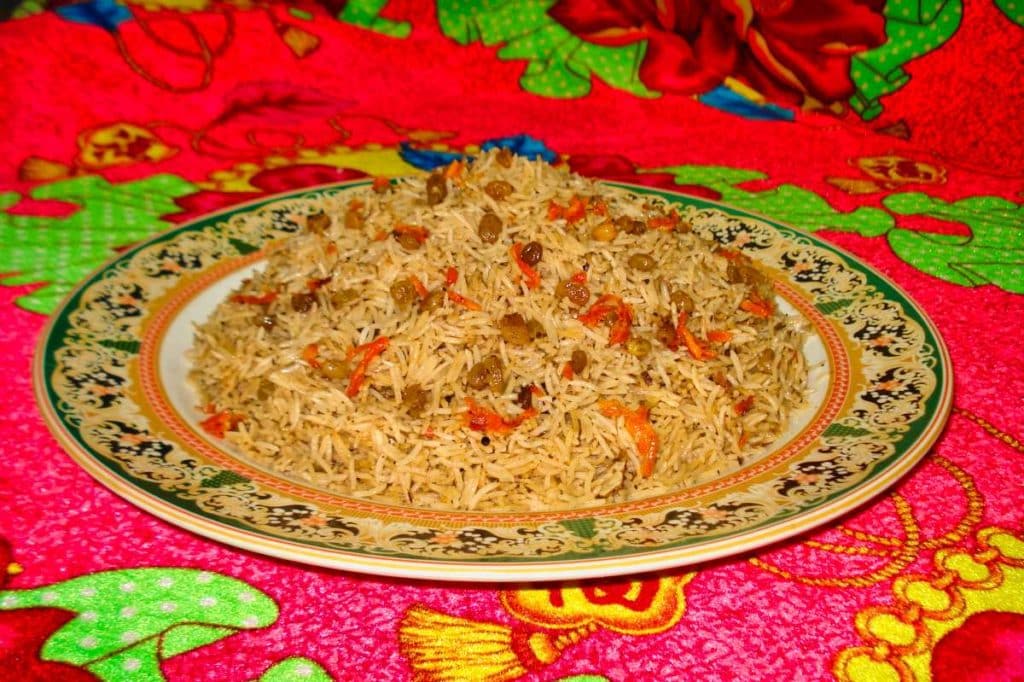
Plov
Probably the best-known and most widespread Azerbaijani dish is plov, which is also known as pilaf in other countries. This national dish consists of long-grain rice that is cooked in a broth, making it particularly fluffy. The rice is enriched with saffron and onions.
In contrast to the Uzbek plov, in the Azerbaijani version the other ingredients such as meat, fish, dried fruit or vegetables are not added during cooking, but are usually prepared and served separately. During a visit to Azerbaijan, it is quite possible to get to know different variations of the dish over time. After all, there are dozens of different plov recipes in the country!
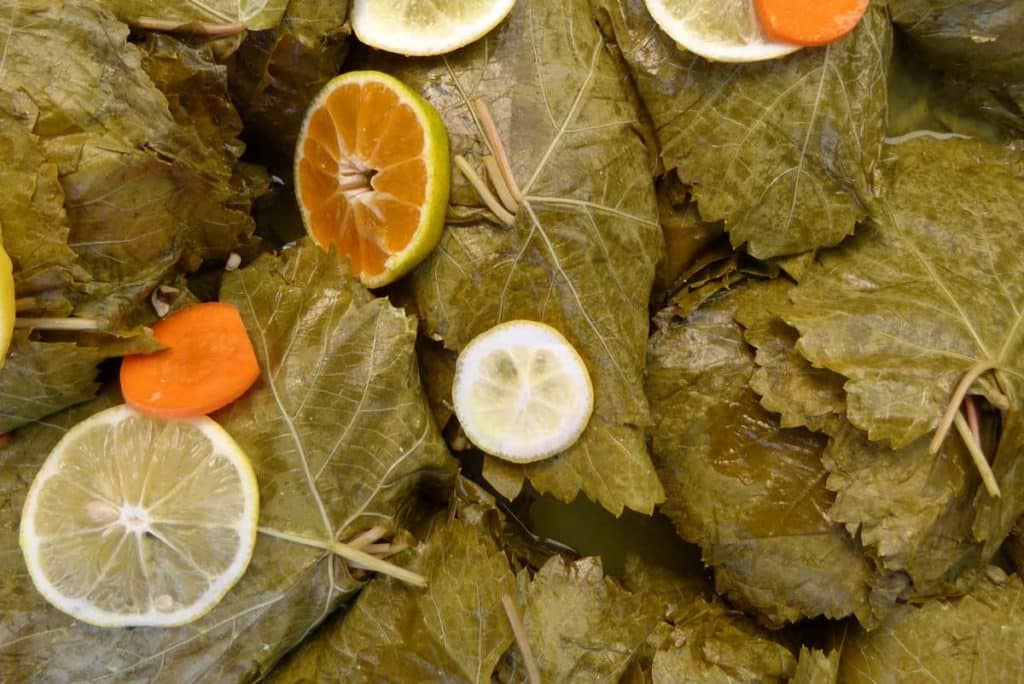
Dolma
It is impossible to imagine Azerbaijani cuisine without dolma. This specialty, which is popular in all regions of the country and is also served on holidays, also comes in several variations. The term “dolma” comes from Turkish and means something like “filled”. Basically, the dish is vine leaves stuffed with rice, minced lamb and vegetables. However, instead of vine leaves, you can also use other vegetables such as tomatoes, peppers or eggplants as a casing.
Dolma – More than just a dish
Dolma is shared in the family or in the community, it expresses solidarity and hospitality. This tradition is passed down from generation to generation and therefore crosses ethnic and social boundaries in the country. For this reason, the UNESCO recognized Azerbaijani dolma as an intangible cultural property in December 2017.
Dovga
Soups and stews are also popular in Azerbaijan. One of the most popular soups in the country is dovga. This dish is prepared from yogurt, rice and fresh herbs such as dill, mint or chervil. For meat lovers, meatballs (either ground beef or lamb) are added. On the other hand, if you prefer vegetarian, you can use chickpeas instead. Dovga gets its distinctive flavor primarily from the herbs used in cooking. This soup is especially suitable for hot summer days, as it is very light and refreshing. In addition, the preparation of Dovga is relatively simple.

Piti
Much heartier, on the other hand, is the traditional piti, a stew consisting of lamb, chickpeas, saffron and some lamb fat. It is an old specialty from Şəki. While piti used to be popular mainly among local farmers, it is now eaten with pleasure throughout the country. A special feature of the thick soup is that it is prepared in a closed clay pot. Compared to dovga, however, the preparation process is much more complex. In addition, you should bring plenty of time: After all, you have to let the soup simmer for several hours at low heat. But the effort is worth it: Piti is one of the classics of oriental cuisine for a reason.
Kutab
Kutabs are Azerbaijani style dumplings. They consist of a thinly rolled dough that is filled with fresh herbs, minced meat, pumpkin or cheese and then folded shut. Usually only flour, water and water are used for the dough. Kutabs are fried in a domed pan called saj. What is special about this delicacy is that it can be served on different occasions. It tastes good both hot and cold and can be served as a main course or as a snack. Not only the occasions when it can be eaten, but also the ways of preparing it are varied, because depending on the region, the ingredients used for kutab vary.
Baliq
Due to its location on the Caspian Sea, Azerbaijani cuisine is rich in delicious fish dishes. Around 150 different species of fish are said to live in the salt lake, which is not actually a sea at all. A very popular fish in Azerbaijan is the sturgeon, which is also particularly popular for the dish Baliq. The fish is cut into pieces and marinated with fresh lemon juice, chopped dill and salt. It is then grilled on a skewer as a shish kebab. Chopped onions and tomatoes are served as side dishes. This popular dish is traditionally decorated with lemon slices.
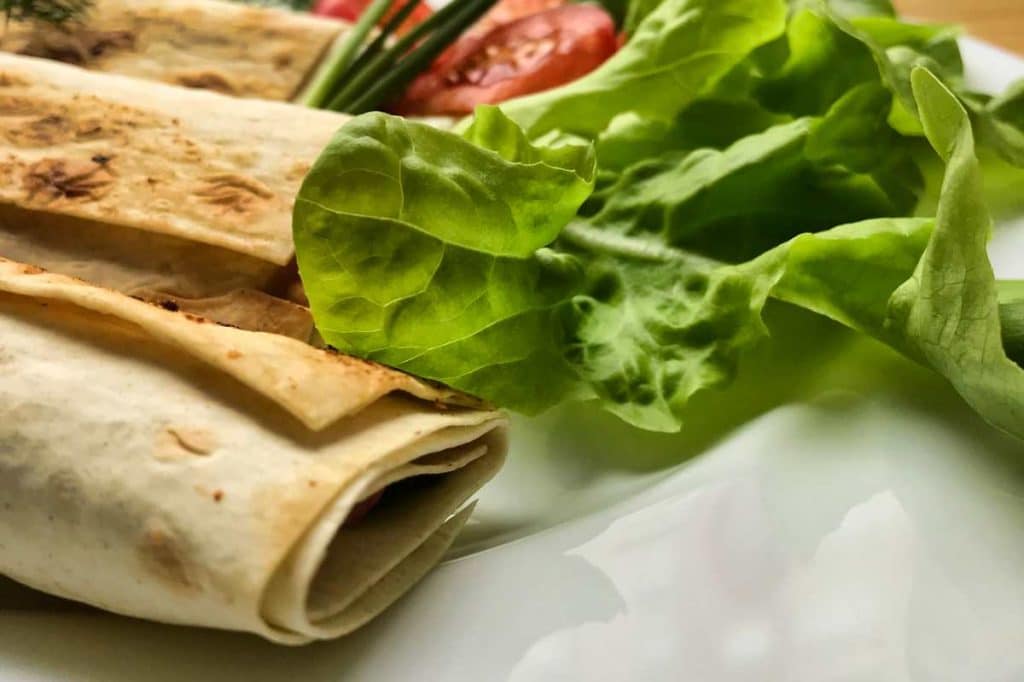
Lavash
The classic Azerbaijani flat bread bears the name Lavash. It is an unleavened bread, which is known and extremely popular not only in Azerbaijan, but also in countries such as Armenia, Turkey or Georgia. In Turkey, Lavash is often used as a dough roll for Dürum kebab. The classic preparation is quite simple, only three ingredients are needed: Flour, water and salt. After the lavash is baked, it is very easy to shape at first. However, the thin flatbread dries very quickly and becomes very crispy. A very popular variety of lavash in Azerbaijan is called kelaneh. This is basically a lavash bread filled with fresh herbs and spring onions.
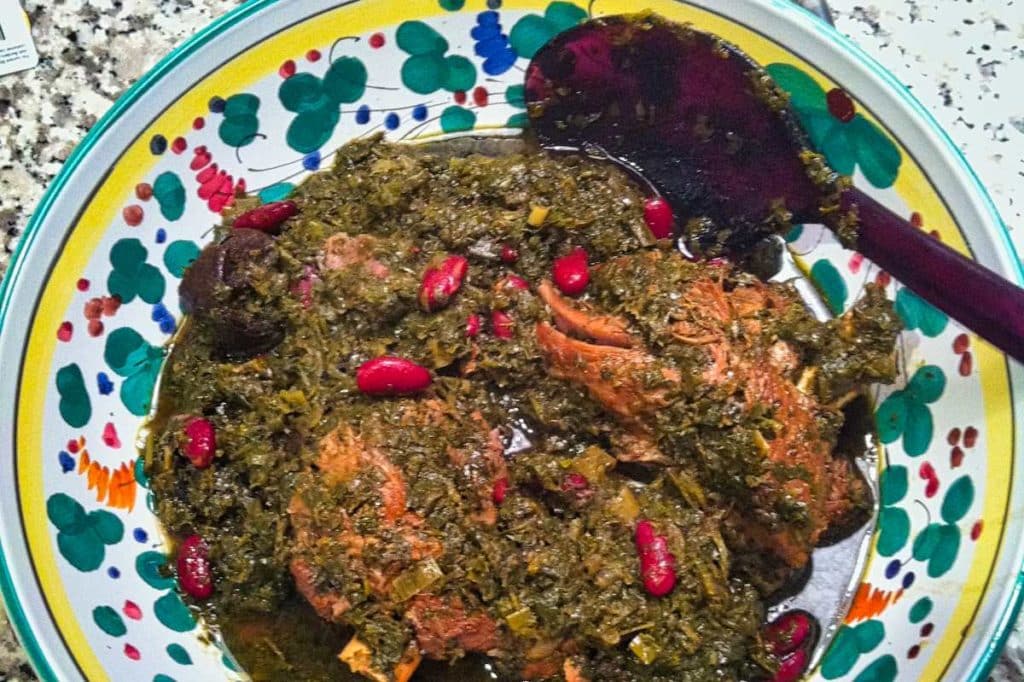
Ghormeh Sabzi
This traditional stew, also widely used in Iran, is composed of herbs, beans and lamb. The term “ghormeh” means “stew” in Persian, while “sabzi” can be translated as “herbs” or “green”. The preparation of this quite healthy and very aromatic dish is simple. Cooking the stew is not really time-consuming, but the dried beans must be soaked in water for several hours beforehand. The peculiarity of Ghormeh Sabzi is that seven different herbs are included in the dish. In addition to the main herbs parsley, fenugreek and field garlic, each family swears by other favorite herbs to be included in the stew. As a side dish, as with other Azerbaijani dishes, rice is a favorite.
Shekerbura
Shekerbura is a classic dessert, which is a real eye-catcher due to its special appearance. It is a sweet pastry in the shape of a half-moon, filled with a mixture of nuts and sugar. Usually almonds, hazelnuts or walnuts are used. The “shell” of the pastries is also not infrequently decorated with geometric figures. The old name for this treat is sheker burek, a Turkish word meaning “sweet pastry” or “sweet cake.” The sweet pastries are especially popular at Nouruz, the Persian-Azerbaijani New Year and spring festival.
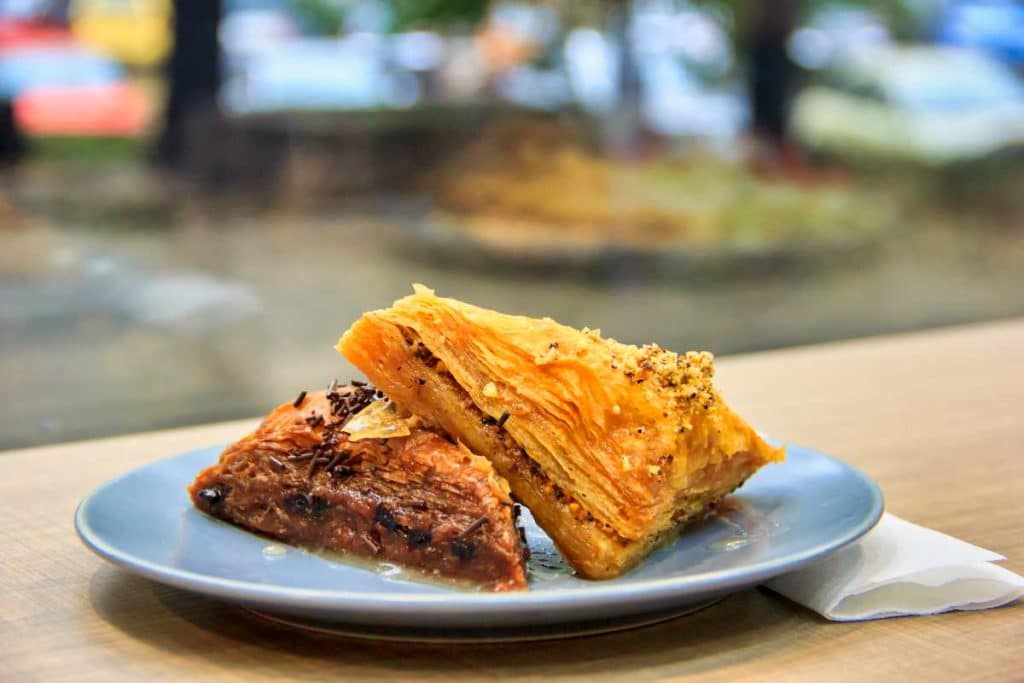
Pahlava
The beginning of spring is also traditionally celebrated in Azerbaijan with another dessert. The pastry pahlava is reminiscent of the well-known Baklava, which is one of the most popular oriental sweets, and not only because of its name. These small delicacies consist of several thin layers of puff pastry filled with walnuts, almonds or pistachios. In contrast to their Turkish counterpart, Pahlava are characterized by a somewhat milder sweetness.
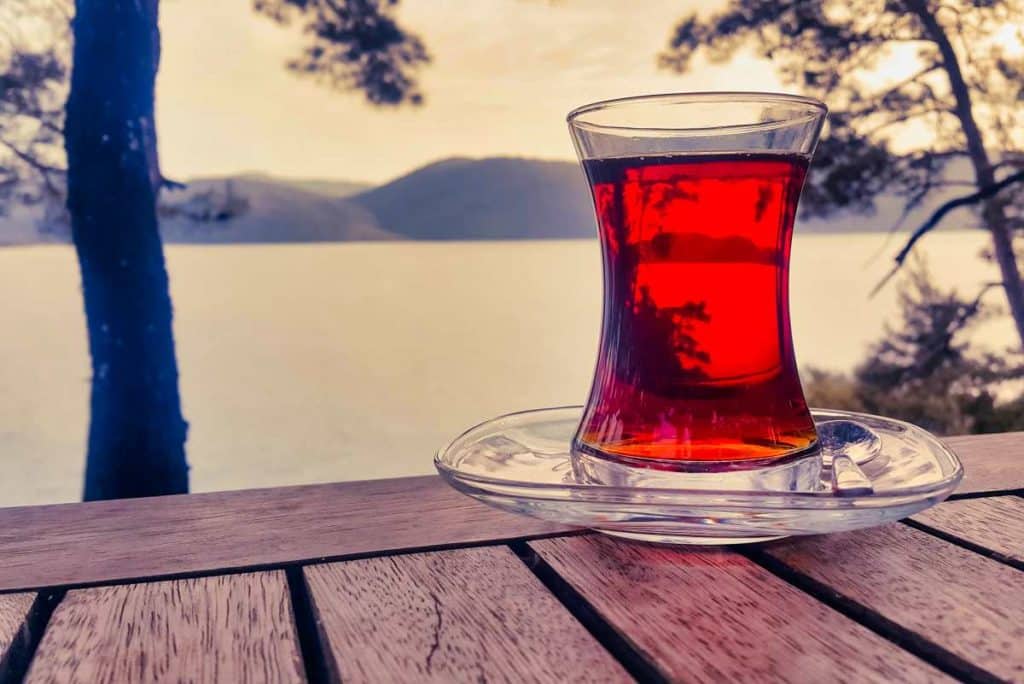
And what do you drink with your meal?
Black tea is the beverage of Azerbaijan, and the local tea tradition goes back some 3,000 years. This is partly due to the country’s location north of Iran’s tea-growing regions and its own tea region around Lankaran, but also to the fact that alcoholic beverages never became popular in the Muslim country. What distinguishes Azerbaijan from other “tea nations” such as China is the preparation in the samovar (literally translated: self-cooker), which also enjoys great popularity in Russia. Here, concentrated tea is infused with hot water and thus diluted. If you click here, you will get to our overview of the national drinks in Eastern Europe.
Azerbaijani Cuisine Book Tips
Have you got really hungry now? Then maybe the following book tips are something for you. What do you think of Azerbaijani cuisine and what is your favorite Azerbaijani dish? Let us know and write us a comment below!
Beautifully designed book with recipes that are not always very simple, but which describes them very accurately and provides a nice introduction to the cuisine of Azerbaijan.
- Hercules, Olia (Author)
This compendium should probably contain pretty much all the dishes that exist in Azerbaijani cuisine. Wonderfully designed and over 800 pages strong!
The German authors go a step further in this English-language book and look at Azerbaijani cuisine from a cultural point of view as well!
A nice introduction into Azerbaijani cuisine, but also the one of other countries in the region. The cultural background of the dishes also play an important role and the pictures are simply breathtaking.
- Hercules, Olia (Author)

